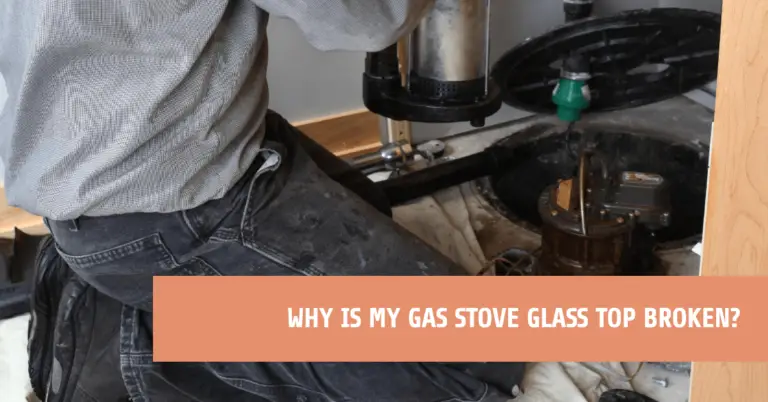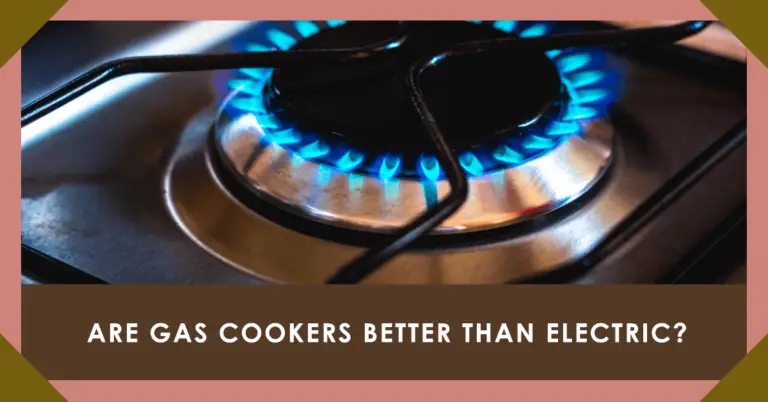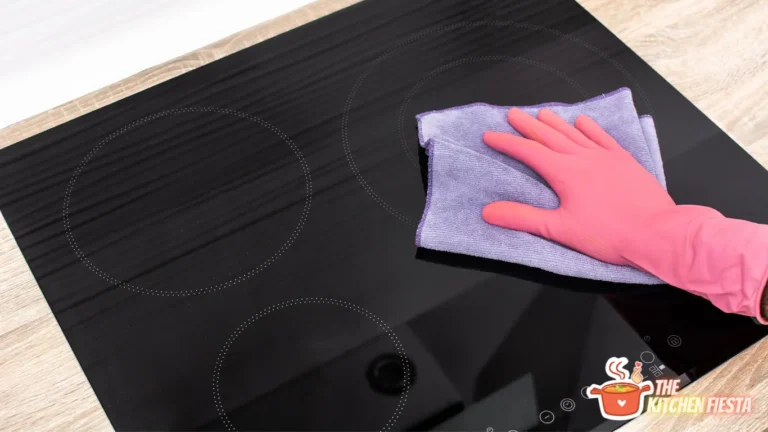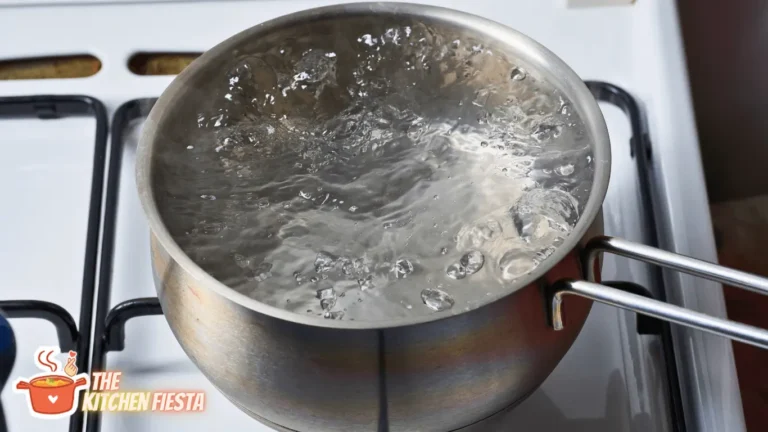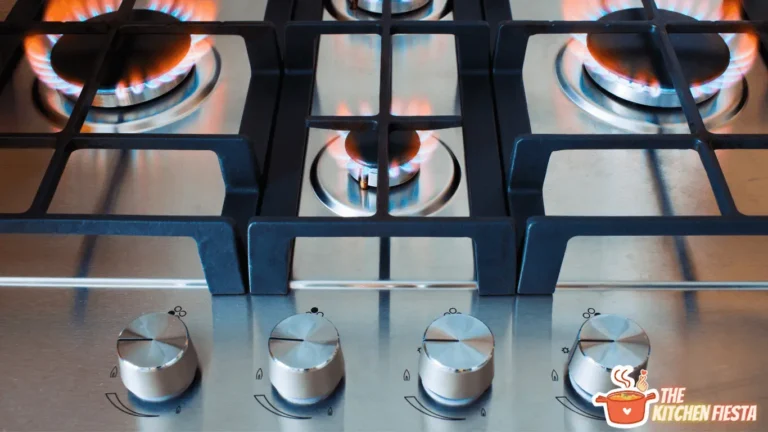Gas Leak from Stove: Causes, Symptoms, and Prevention
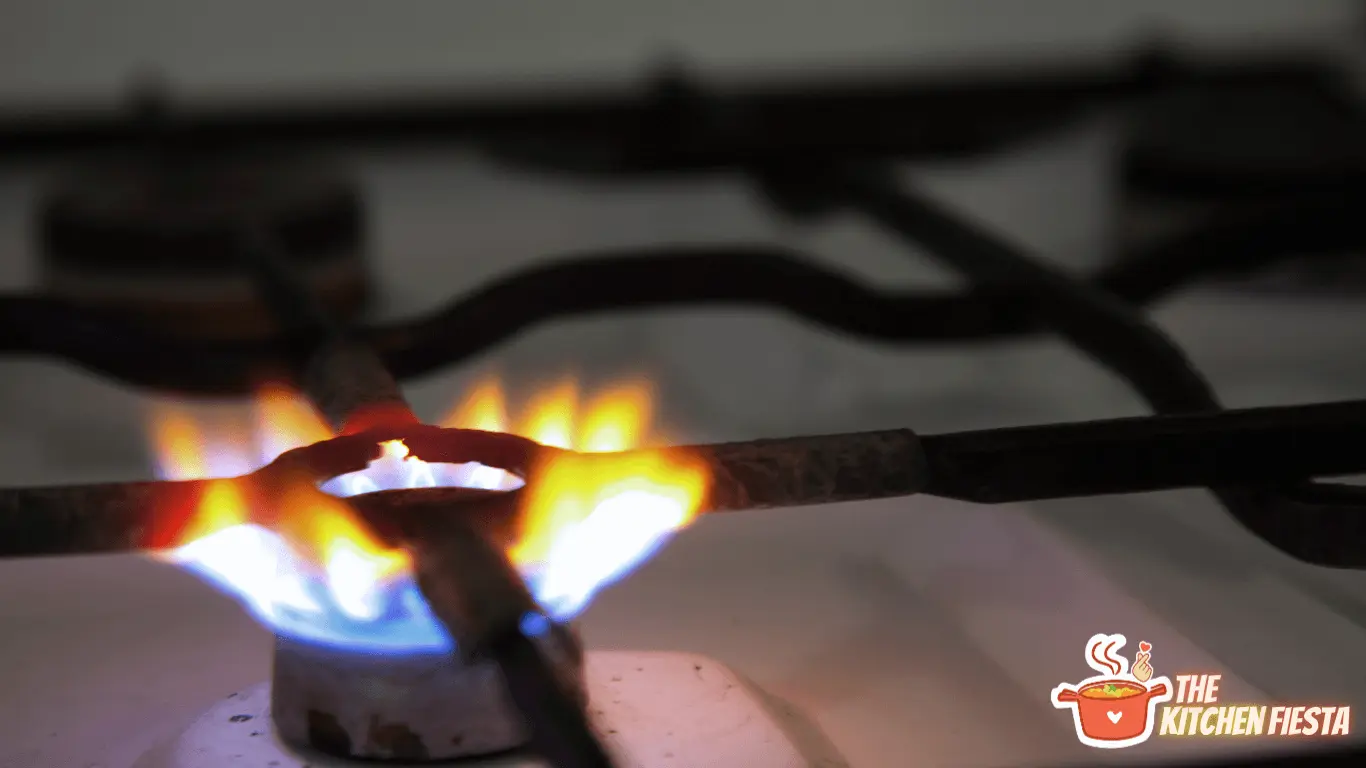
Living in a home powered by natural gas or propane comes with certain risks. Gas leaks from appliances like furnaces, water heaters, and especially stoves can be extremely hazardous. But how do you know if your gas stove might be leaking potentially deadly fumes into your kitchen? And if it is, what should you do about it?
Can you detect a gas leak from your stove before it’s too late? What are the signs, dangers, and how you can stop gas leaks in their tracks?
The short answer is yes, you can detect gas leaks from a stove before they become dangerous. There are a few clear signs of a gas leak like the smell of rotten eggs, a hissing sound, dying pilot lights, yellow flame, and issues igniting your burners. Gas leaks pose serious health risks like explosions, fires, carbon monoxide poisoning, suffocation, and more. The best way to detect leaks is with gas detectors. If you suspect a leak, leave immediately and call the gas company. Preventing leaks involves proper stove maintenance, ventilation, installing detectors, and upgrading old appliances.
This comprehensive guide will cover:
- Common causes of gas leaks from stoves
- How to recognize the signs of a leak in your home
- Dangers and health risks of gas leaks
- Detecting gas leaks – what to look and smell for
- Types of gas detectors and how they work
- What to do if you suspect a stove is leaking
- When to call the gas company about a leak
- Preventative steps to avoid hazardous gas leaks from stoves
- Proper stove maintenance to prevent leaks
- Installing gas detectors in your kitchen
- Upgrading from an old, faulty gas stove
- Gas stove alternatives like electric and induction
- How to live safely with gas appliances
If you think your gas stove might be leaking dangerous fumes into your home, this guide will provide the knowledge you need to detect, diagnose, and prevent catastrophic gas leaks.
What Causes Gas Leaks in Kitchen Stoves?
Before learning how to find gas leaks, it helps to understand what causes them in the first place. There are a few common reasons you may develop a leak from your gas stove:
- Faulty or damaged gas lines leading to the stove
- Cracks in the gas supply pipes or hoses
- An issue with the gas regulator or valves
- Broken seals around burners
- Leaks from pilot lights
- Defective stove parts like valves, knobs, or igniters
- Poorly installed or maintained gas stoves
- General wear and tear on seals, hoses, pipes over time
Natural gas and propane are delivered to your stove via metal pipes and rubber hoses. Over time, these can degrade, develop cracks, and loosen. This allows gas to escape before it reaches the burners to be burned off.
Faulty stove parts like valves, igniters, and knobs can also cause leaks if they are broken or worn out. Damaged or faulty regulators and pressure valves may deliver too much gas. And if the seals around the stove burners are cracked or degraded, gas can leak out around the edges.
The point is that as a gas stove ages and wears, the risk of developing dangerous gas leaks only grows. Staying on top of stove maintenance and knowing the signs of a leak are important. Next, let’s look at how to recognize those leak indicators.
Signs There is a Gas Leak in Your Stove
Natural gas and propane are both invisible, odorless gases. That makes leaks nearly impossible to detect with your senses alone. However, utility providers add an important compound called mercaptan to give gas that distinct “rotten egg” smell. This helps homeowners to more easily detect gas leaks by scent.
Here are some of the most common signs that your stove may have a hazardous gas leak:
- A “rotten egg” smell – this scent will be strongest at the stove but may linger in other rooms too
- An audible hissing or whistling sound near the appliance
- Dead or repeatedly dying pilot lights
- Burner flames that burn yellow or orange instead of blue
- Burners are harder to ignite or won’t light at all
- The stove top feels abnormally warm
- Signs of carbon deposits or soot around the stove
- Increased moisture inside stove or on windows and walls
While the rotten egg odor is the most distinct indicator, don’t ignore more subtle signs either. If your pilot lights need constant reigniting, burners are slow to light, or flames seem abnormal, a leak may be interfering with proper ignition. Any new or worsening issues with your stove’s performance could point to a dangerous gas leak.
Trust your nose, trust your ears, and pay attention to any changes in your stove’s operation. The sooner you detect a leak, the sooner you can eliminate the risk and get repairs made. Next, let’s look at why gas leaks are so hazardous and concerning.
Dangers and Health Risks of Gas Leaks
In themselves, natural gas and propane are non-toxic. But when these combustible gases concentrate indoors from a leak, it can result in some grave health risks including:
- Explosions – if ignited, leaking gas can cause violent blasts, destroying homes and seriously injuring people. Gas is highly flammable and explosive at concentrations of just 5-15%.
- Fires – gas may not always explode, but it can easily ignite into fires that spread quickly, posing risk to life and property.
- Suffocation – in high enough concentration, accumulating gas displaces oxygen, leading to suffocation.
- Carbon monoxide poisoning – when gas doesn’t burn properly or vents indoors, it releases toxic CO into the air which can be deadly with prolonged exposure.
- Headaches, dizziness, fatigue – even at lower levels, inhaling natural gas fumes can lead to adverse health effects like headaches, dizziness, fatigue, and more.
Children, pregnant women, elderly individuals, and those with respiratory issues are especially vulnerable to the effects of indoor gas leaks. But leaks present serious risks for people of all ages and health statuses.
While natural gas gives us convenient access to heating and cooking in our homes, we have to be vigilant about detecting and stopping leaks before they can put families in danger. Next we’ll cover different methods for how to detect a gas leak.
How to Detect Gas Leaks in Your Home
If you notice the common signs of a gas leak from your stove, prompt action is required. Here are a few ways to help confirm and pinpoint the leak location:
- Use your nose – follow the “rotten egg” smell to isolate the source. The strongest area of odor is likely nearest the leak.
- Listen for hissing – turn off all gas appliances and listen closely around lines and valves for any audible hissing.
- Conduct a bubble test – use a spray bottle of soapy water to coat gas lines, valves, fittings, and seals. If bubbles form, gas is escaping from that spot.
- Notice dying pilot lights – if all appliance pilots repeatedly go out, it likely indicates a leak is starving flames of fuel.
- Look for moisture – leaks can cause moisture buildup on pipes, walls, windows and mirrors due to changes in air pressure. Take note of any humid areas near gas appliances.
- Use gas detectors – specialized gas leak detectors can “sniff out” natural gas or propane leaks before you’d be able to smell them (more on detectors later).
- Call the gas company – if you suspect a leak but can’t confirm it yourself, contact your gas service company to inspect for leaks and get professional help locating the issue.
Don’t hesitate to gather as much evidence as possible through multiple detection methods. Trust all your senses and devices to act fast if you suspect your stove or another appliance is leaking.
What should you do if your investigation confirms that your stove has a gas leak?
What to Do If You Suspect a Gas Leak
If your stove shows clear signs like rotten egg smell or audible hissing, or detectors sound an alarm, don’t waste time. A gas leak means you need to take urgent action:
- Evacuate the building immediately – don’t stop to grab belongings or even shoes. Leave pets inside unfortunately. Any ignition source could set off an explosion.
- Call emergency services from a safe location – call 911 and your gas provider’s emergency number. Alerting the fire department and utility company is crucial for getting immediate help.
- Don’t turn any lights or electronics on/off – any spark from a switch or device could ignite the gas. Likewise, never strike a match or smoke!
- Don’t use phones near the leak – no mobile phones either, as these can spark explosions too. Call emergency services once at a good distance.
- Open windows and doors if safe to do so – ventilate the home to prevent gas concentrations from building up further indoors. Avoid re-entering the home to do so though.
- Have a technician inspect repairs before re-occupying – don’t re-enter until the gas company confirms that the leak has been fully resolved and disposed of.
This is one situation where you must act fast and err on the side of caution. Never take chances with a suspected natural gas leak, as the tiniest spark could set off a deadly blast. Exit first, call for help, and let professionals inspect for repairs needed.
So when should you place that critical call to your gas company about a leak?
When to Call the Gas Company About a Leak
Don’t “wait and see” if you detect signs of a gas leak in your home. Call the gas company immediately if:
- You smell even a faint “rotten egg” odor
- Gas detectors sound an alarm or register high concentration of gas
- You hear an audible leaking hiss near appliances
- Pilot lights repeatedly go out
- Flames burn more yellow or orange than normal
- Burners become difficult to light
- You see signs of moisture near pipes or appliances
Utility companies often recommend that homeowners buy a gas detector for their homes. But you shouldn’t only rely on technology to alert you. Trust your nose if you ever notice that distinct sulfurous smell.
Never assume a gas leak will “fix itself” or isn’t serious. Any amount of accumulated gas can potentially ignite and fuel fires or explosions. Gas companies would much rather respond to a false alarm than have a delayed response lead to disaster.
So pick up the phone and call for assistance at the very first suspicion of a leak. The gas company can dispatch leak detection crews, shut off your home’s gas if needed, and get any repairs made to stop leaks promptly. Don’t delay when dealing with the risk of leaking natural gas.
Now let’s focus on crucial prevention. What proactive steps can you take to avoid the hazard of gas leaks from your stove in the first place?
How to Prevent Gas Leaks in Your Stove
While some leaks are unavoidable over time, you’re not entirely at the mercy of faulty stove parts and aging pipes. These tips can help stop leaks before they start:
- Have your gas lines inspected annually – utilities may do this, but request an inspection if not. They can check for leaks and pipe damage.
- Ensure proper stove installation – leaks can stem from incorrect appliance installation. Always use a licensed gas contractor.
- Keep burners and oven clean – don’t allow spills, grease, or debris to accumulate. These can interfere with stove performance.
- Replace rubber supply hoses every 5-7 years – the flexible gas hoses wear out over time increasing leak risk.
- Use stove ventilation hoods – hoods that vent outside help prevent gas concentrations from accumulating indoors.
- Check flexible stove connections – ensure rubber or corrugated metal flex hoses aren’t crimped, damaged, or loose.
- Perform regular stove maintenance – check valves, pipes, seals, and hoses periodically for leaks and have repairs done quickly.
With gas stoves, being proactive goes a long way. Don’t ignore aging parts or loose fittings that are more prone to allowing hazardous leaks over time. Prioritize inspections, maintenance, and replacement of wear-and-tear-prone components.
But what does proper stove maintenance involve? And how often should you be checking for potential leaks?
Maintaining Your Gas Stove to Avoid Leaks
To keep your gas stove running safely and leak-free, follow these maintenance tips:
- Do a smell check around your stove about once a month to detect leaks early. Trust your nose!
- Check stove burners visually once a month – ensure flames burn evenly blue with no yellow tipping. Yellow flames indicate a problem.
- Wipe down the stove surface regularly to prevent debris, grease, and spills that can impede stove function.
- Deep clean the stove surface and burner pans 2-4 times per year. Lift off grates and use oven cleaner to fully clean.
- Check the flexible gas line once or twice per year. Look for damage, bending, blockage, or loose connections that could cause leaks.
- Inspect stove gaskets and seals and replace any with cracks or damage. This prevents gas from leaking from fittings.
- Confirm pilot lights ignite easily, remain lit, and burn steady. Weak or dying pilot lights hint at a pesky gas leak.
- Review owner’s manuals for suggested maintenance specific to your exact stove make and model. Follow manufacturer instructions.
- Replace old stove parts like hoses, valves, thermocouples, igniters, fittings when they show wear or no longer function properly. Don’t delay replacement.
Regular stove inspections, cleaning, gasket checks, and part replacements when needed will go a long way to preventing hazardous leaks. But a crucial extra layer of preventative care is installing gas leak detectors in your kitchen.
Installing Gas Leak Detectors in Your Kitchen
Given how odorless and invisible natural gas is alone, every home with gas appliances should invest in specialized gas detectors. These provide an extra essential layer of safety to prevent leaks.
Gas detectors feature sensor technology designed specifically to detect natural gas and propane even in tiny trace amounts. Look for these two key types:
- Natural gas detectors – designed to detect methane specifically. They sound an alarm before gas reaches an explosive concentration.
- Carbon monoxide detectors – CO results from improper combustion. Detectors alert you to this deadly gas before it reaches toxic levels.
Ideally, install both a natural gas leak detector and a CO monitor in your kitchen near the stove. Additional detectors nearby in hallways, basements, and bedrooms also helps provide whole-home coverage.
Choose detectors with digital displays that show the current gas concentration. This allows you to monitor levels and address rising gas early before it becomes immediately hazardous.
Gas detectors serve as an invaluable early warning system against leaks. They sense the slightest trace of natural gas or CO long before it reaches concentrations your nose can detect. If you ever suspect a leak, check your detectors first if they haven’t already alarmed. Having both types is ideal for maximum safety.
Beyond gas detectors and proper stove maintenance, one other major way to prevent hazardous leaks is upgrading from an old, faulty appliance.
Is it Time to Upgrade Your Old Gas Stove?
Many home gas leaks originate from aging stoves with components and parts that degrade over time. If your gas stove is more than 10 years old, you may want to consider replacing it entirely.
Signs that your old stove could be developing leaks:
- Loose parts, rattling, any wobbling when opening the oven
- Rusting or deterioration on the stove surface or fittings
- Weak, broken, or dysfunctional valves, knobs, pipes, or igniters
- Yellowing cooktop grates or burners
- Pilot lights that won’t stay lit and require constant relighting
- Burners that ignite slowly or unevenly
If you notice any of these warning signs, the risk of your outdated stove developing dangerous gas leaks only grows. Upgrading to a brand new, properly installed gas range greatly minimizes the leak hazard.
Latest stove models also boast improved safety features like anti-tip brackets, automatic shut-off valves, gas flow sensors, and more. If peace of mind is a priority, investing in a new modern gas stove truly pays off over time.
However, gas isn’t your only kitchen appliance option…
Gas Stove Alternatives Like Electric and Induction
Given the combustible fuel and complex components involved with gas cooking, more homeowners are switching over to:
- Electric ranges – these provide a flame-free alternative while retaining familiar cooktop and oven functions. No fuel combustion means fewer leaks or ventilation concerns.
- Induction cooktops – induction uses magnetic technology to heat pans directly, so the surface never gets hot. Induction pairs nicely with standard electric ovens.
Electric and induction ranges allow you to keep favorite cookware and recipes while benefiting from leak-free, flameless cooking. And new induction technology rivals gas stoves in responsiveness, control, and heating power.
For homeowners nervous about living with a gas appliance long-term, electric and induction ovens present a compelling alternative that eliminates the leak hazards of gas.
While trading your gas range for an electric or induction model is one option, what if you plan to stick with gas appliances? How do you ensure safe, responsible gas usage in that case?
Living Safely With Gas Appliances
Around 40% of American households use natural gas for appliances like stoves, water heaters, and home heating systems. If gas is abundant in your area and you don’t plan on replacing your gas range anytime soon, focus on living safely with gas:
- Have gas appliances installed and serviced by professionals – don’t attempt dangerous DIY gas projects. Leave it to experts.
- Install gas detectors – have both natural gas and CO monitors to alert you to leaks early. Place them near all gas appliances.
- Conduct monthly leak inspections – physically smell around appliances monthly and do bubble solution tests on pipes and fittings to check for leaks.
- Keep appliances maintained – follow manufacturer maintenance instructions for furnaces, water heaters, stoves, etc. Replace old parts promptly.
- Ensure proper ventilation – use vents and hoods that lead outside. Don’t allow gas combustion byproducts to accumulate indoors.
- Know when to upgrade appliances – replace any gas appliances over 10 years old, especially if you notice any issues with leaks, flames, or performance.
- Learn gas safety habits – teach family members to recognize the “rotten egg” smell, evacuate immediately if noticed, and call the fire department.
- Consider switching cooking to electric/induction – even if you keep your gas furnace or water heater, choosing an electric or induction stove eliminates a problematic leak source.
While potentially more convenient, gas does demand vigilance. But you can minimize risks by combining preventative maintenance, gas leak detectors, proper ventilation, and safe gas habits. With the right systems in place, your family can continue benefiting from gas without undue safety risks.
Conclusion and Summary of Preventing Stove Gas Leaks
Living with gas appliances comes with inherent risks that responsible homeowners must manage. Gas stove leaks in particular can rapidly fill your home with dangerous concentrations of flammable gas if not detected quickly.
You now know the common causes of stove leaks, the telltale signs to watch out for, the serious dangers leaks pose, and how to check for leaks yourself. You’re also equipped with preventative maintenance tips, reasons to install gas detectors, whether to upgrade appliances, and how to foster good gas safety habits at home.
The bottom line…
If you ever suspect even the slightest possibility of a gas leak, take it seriously. Evacuate your home, call emergency services, and let professionals inspect for repairs that may be needed. Stop leaks swiftly before gas has time to accumulate.
With vigilance, proper maintenance, gas detection technology, and safe practices, your family can feel at ease benefiting from the convenience of natural gas appliances for years to come.

